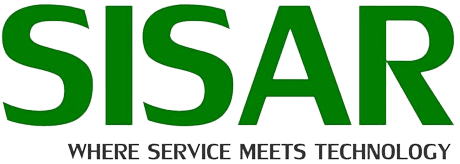In the age of digital transformation, organizations are increasingly relying on technology to streamline operations, enhance customer experiences, and drive innovation. However, with this digital shift comes a heightened risk of security threats, particularly those related to identity and access management (IAM). Ensuring that the right individuals have the appropriate access to resources and data is critical. This is where SailPoint Identity Management, a leader in the identity management space, steps in.

Understanding Identity Management
Identity management identifies, authenticates, and authorizes individuals or groups to access specific resources within an organization. Effective IAM solutions ensure that the right users have the right access at the right times for the right reasons. This not only protects sensitive information but also ensures compliance with various regulatory requirements.
What is SailPoint?
SailPoint helps organizations manage digital identities efficiently and securely with its comprehensive identity governance platform. Founded in 2005, SailPoint has become a trusted name in IAM. It provides solutions that simplify and enhance the management of user identities. These solutions also manage access permissions across various systems and applications.
Key Features of SailPoint Identity Management
1. Identity Governance
SailPoint offers robust identity governance capabilities. It enables organizations to define and enforce access policies. This includes determining who has access to what.
- Access Certification: Regularly reviewing and certifying user access to ensure compliance and reduce risk.
- Policy Enforcement: Automatically enforcing access policies to prevent unauthorized access and ensure regulatory compliance.
- Audit and Compliance Reporting: Providing comprehensive reports to demonstrate compliance with regulatory requirements and internal policies.
2. Access Management
SailPoint provides a centralized platform for managing user access across a wide range of applications and systems. Key features include:
- Single Sign-On (SSO):Allow users to access multiple applications with a single set of credentials. This simplifies the user experience and enhances security.
- Multi-Factor Authentication (MFA): Adding an extra layer of security by requiring additional verification steps beyond just a username and password.
- Password Management: Simplifying password resets and enforcing strong password policies to enhance security.
3. Identity Analytics
SailPoint leverages advanced analytics to provide insights into user behavior and access patterns. This helps organizations to:
- Identify Anomalies: Detect unusual access patterns that may indicate a security threat.
- Monitor Access Trends: Track how access is being used over time to identify potential risks and areas for improvement.
- Optimize Access Controls: Use data-driven insights to refine and improve access policies and controls.
4. Lifecycle Management
Managing the entire lifecycle of user identities is a critical aspect of IAM. SailPoint offers comprehensive lifecycle management capabilities. These capabilities include:
- Onboarding and Offboarding: Automate the provisioning and deprovisioning of user access as employees join or leave the organization. This streamlines access management. It also enhances security.
- Role Management: Define and manage user roles to ensure individuals have appropriate access based on their job responsibilities. This ensures effective access control and security.
- Access Requests: Streamlining the process for users to request and receive access to the resources they need.
Benefits of Implementing SailPoint Identity Management
1. Enhanced Security
SailPoint helps organizations significantly reduce the risk of unauthorized access and data breaches. It does this by centralizing and automating identity management processes. This enhances overall security. This ensures access is granted based on the principle of least privilege. Users only receive the access they need to perform their job functions.
2. Improved Compliance
SailPoint simplifies compliance for organizations with built-in audit and compliance reporting. It helps demonstrate adherence to various regulatory requirements. This includes GDPR, HIPAA, and SOX. Automated access reviews and policy enforcement continuously maintain compliance.
3. Operational Efficiency
Automating identity management tasks such as user provisioning, access requests, and password resets can save significant time and resources. This allows IT teams to focus on more strategic initiatives and reduces the burden of manual processes.
4. Better User Experience
Features like single sign-on and self-service password management enhance the user experience. They simplify access to applications and reduce frustration. This helps in managing multiple passwords more efficiently.
Implementing SailPoint: Best Practices
1. Conduct a Needs Assessment
Before implementing SailPoint, conduct a thorough needs assessment. This helps understand your organization’s specific requirements and challenges. This includes identifying key stakeholders, defining objectives, and assessing the current state of identity management.
2. Develop a Strategic Plan
Develop a strategic plan that outlines the goals, scope, and timeline for the implementation. This should include a detailed roadmap that covers all phases of the project, from initial setup to ongoing maintenance and support.
3. Engage Stakeholders
Engaging key stakeholders from across the organization ensures the success of the implementation. This includes IT, security, compliance, and business units. Engaging stakeholders ensures that all perspectives are considered and that there is buy-in and support for the project.
4. Start with a Pilot – Identity management
Starting with a pilot implementation can help identify potential issues. It also refines the approach before rolling out SailPoint across the entire organization. This allows for testing and validation in a controlled environment and helps to ensure a smooth transition.
5. Focus on Training and Communication
Training and communication are essential components of a successful implementation. Ensure that all users understand the new processes and tools, and provide ongoing training and support to help them adapt. Effective communication also helps to manage expectations and address any concerns that may arise.
6. Monitor and Optimize – Identity management
Once you implement SailPoint, it is important to continuously monitor and optimize the solution. This includes regularly reviewing access controls, conducting audits, and leveraging analytics to identify areas for improvement. Continuous monitoring helps to ensure that the system remains effective and that security risks are promptly addressed.
Conclusion – Identity management
In today’s digital age, effective identity and access management is more important than ever and SailPoint offers a comprehensive solution that helps organizations to manage identities securely and efficiently.
Sisar leverages its deep understanding of technology environments to seamlessly integrate SailPoint with existing systems, ensuring that all user activities are efficiently managed and monitored. By partnering with Sisar, tech companies can not only enhance their security measures and ensure compliance but also achieve greater operational efficiency. Sisar’s comprehensive support in deploying SailPoint includes planning, integration, policy development, role management, and continuous monitoring, making it an indispensable ally in protecting and streamlining identity management processes.






